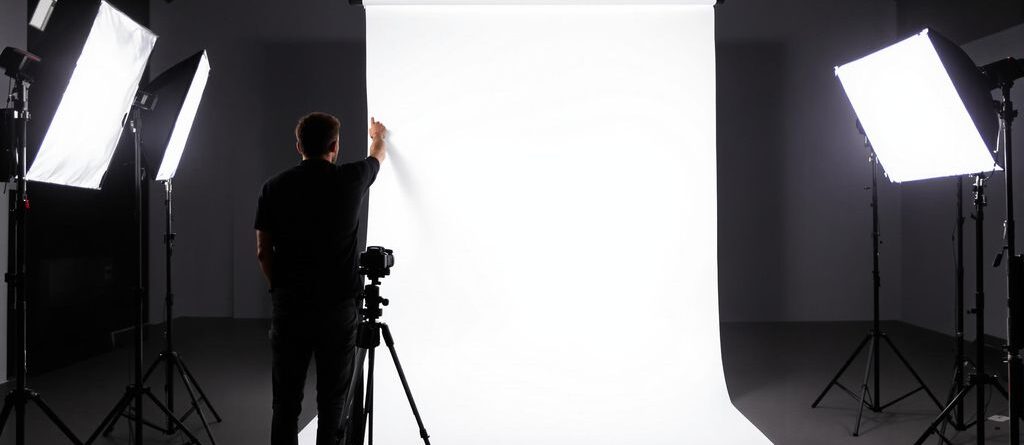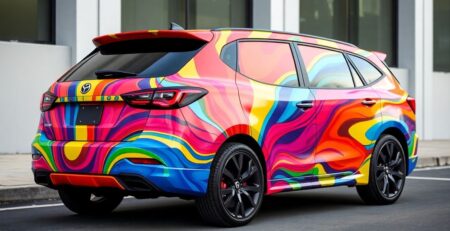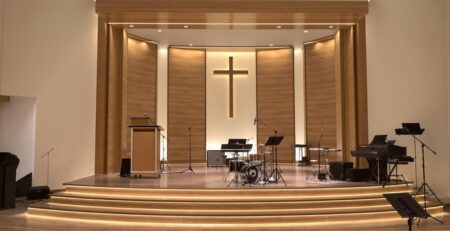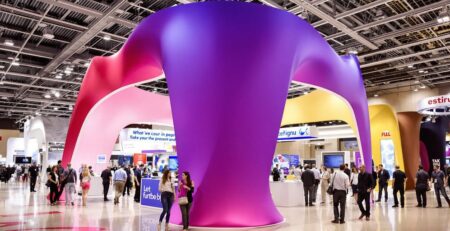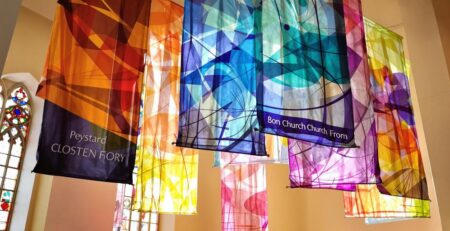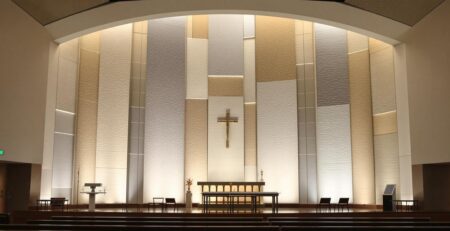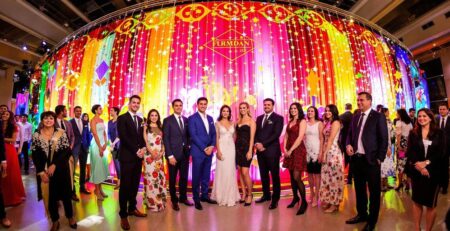Choosing the Perfect Backdrop Size for Your Photography
Picking the right backdrop size for your photos can be a bit tricky, but it really makes a difference. You want your pictures to look good, right? Well, the backdrop is a huge part of that. It’s not just about what’s in front of the camera, but what’s behind it too. Getting the backdrop size wrong can mess up your whole shot, making things look cramped or just plain awkward. So, let’s figure out how to choose the perfect backdrop size so your photos always look amazing.
Key Takeaways
- Think about your photography type; portrait, product, or event shooting each has different backdrop size needs.
- Always measure your studio space before buying a backdrop; ceiling height and room size matter a lot for backdrop size.
- Match your backdrop size to your subject and how you want to frame the shot, whether it’s a single person or a group.
- Different backdrop materials, like vinyl or fabric, come in various sizes and have pros and cons for durability and portability.
- Proper lighting techniques work best with the right backdrop size to avoid shadows and get that clean, professional look.
Understanding Your Photography Niche and Backdrop Size
Portrait Photography Backdrop Size Considerations
Choosing the right backdrop size for portrait photography depends heavily on the type of shots you plan to capture. For headshots, a smaller backdrop is sufficient, while full-body portraits require a larger surface area. What kind of portraits are you planning to shoot, and how will that influence your backdrop needs?
Product Photography Backdrop Size Essentials
Product photography demands a backdrop size that complements the scale of your items. If you’re shooting small jewelry, a compact backdrop will do, but larger items like furniture need more space. Consider the size of your products and how much negative space you want in your images to determine the ideal backdrop size.
Event Photography Backdrop Size Planning
Event photography often involves groups, so your backdrop needs to be wide enough to accommodate several people. A step and repeat backdrop banner is a popular choice for red carpet events, but for smaller gatherings, a more modest size might suffice. How many people do you anticipate photographing at once, and what kind of aesthetic are you aiming for?
Evaluating Your Studio Space for Backdrop Size

Measuring Room Dimensions for Optimal Backdrop Size
Accurately measuring your studio space is the first step to selecting the right backdrop size. Consider the width, length, and height of your room to ensure your backdrop fits comfortably without feeling cramped. A larger studio allows for bigger backdrops, offering more flexibility in your shots, while a smaller space requires careful planning to maximize the available area. Knowing your dimensions helps avoid the frustration of a backdrop that’s too big or too small, ensuring a smooth and efficient photoshoot.
Ceiling Height Impact on Backdrop Size Selection
Ceiling height significantly impacts your backdrop choices, especially for full-body shots. Low ceilings might necessitate wider backdrops to compensate for the limited vertical space, while high ceilings offer more versatility. Consider how much of the backdrop you want visible in your photos; a taller backdrop is essential for capturing standing subjects without the background ending abruptly. Therefore, assess your ceiling height to determine the maximum height of your step and repeat backdrop banner and ensure it meets your photographic needs.
Portable Studio Setups and Backdrop Size
For photographers on the go, portability is key when choosing a backdrop. Lightweight and easily collapsible backdrops are ideal for location shoots, but size still matters. Consider the typical subjects you’ll be photographing in your portable studio; a smaller, more manageable backdrop might suffice for headshots, while larger groups require a wider setup. Think about the transportation and storage aspects as well; a compact backdrop that fits easily into your vehicle and storage space will make your life much easier. Ultimately, balancing size and portability ensures you’re always ready to capture stunning images, no matter where you are.
Matching Backdrop Size to Subject and Composition
Single Subject vs. Group Photography Backdrop Size
Choosing the right backdrop size depends heavily on whether you’re photographing a single person or a group. Larger groups require wider backdrops to ensure everyone fits comfortably within the frame. A smaller backdrop might work for individual portraits, but it will quickly become limiting with multiple subjects. Consider the number of people you’ll typically photograph to select a backdrop that offers enough coverage and flexibility.
Full Body vs. Headshot Backdrop Size Requirements
The type of shot you’re planning also dictates the ideal backdrop size. For full body shots, you’ll need a taller and wider backdrop to cover the entire subject and allow for some floor space. Headshots, on the other hand, require a much smaller backdrop, focusing primarily on the area directly behind the subject’s head and shoulders. What kind of full body shots are you planning to take?
Creative Compositions and Backdrop Size Flexibility
Don’t underestimate the impact of backdrop size on creative compositions. A larger backdrop provides more freedom to experiment with different angles and perspectives, allowing you to create dynamic and visually interesting images. A smaller backdrop can still work, but it might limit your options and require more careful planning. How much flexibility do you want in your creative process?
Material and Durability Considerations for Backdrop Size

Vinyl Backdrop Size for Longevity and Easy Cleaning
Vinyl backdrops are a popular choice because they’re durable and easy to clean, making them ideal for high-use environments. Choosing the right size vinyl backdrop ensures it can withstand frequent handling and cleaning without tearing or fading. Consider the thickness of the vinyl; thicker options like 18oz vinyl banner offer superior resistance to scratches and wrinkles, extending the backdrop’s lifespan. This means less frequent replacements and more cost savings in the long run.
Fabric Backdrop Size for Portability and Softness
Fabric backdrops offer a softer, more natural look, and their portability makes them great for on-location shoots. The size of your fabric backdrop directly impacts how easily you can transport and set it up. Lighter fabrics are easier to fold and carry, but they might wrinkle more easily, so consider a wrinkle-resistant fabric. What size balances portability with the desired aesthetic for your photography?
Paper Backdrop Size for Versatility and Cost-Effectiveness
Paper backdrops are a cost-effective option for photographers who need a variety of colors and textures without a huge investment. Selecting the appropriate paper backdrop size is important because it determines how much usable surface you have before needing to replace it. Paper is prone to tearing and staining, so consider how frequently you’ll be using it and whether a larger roll would be more economical in the long run. Are you prepared to replace paper backdrops more often to maintain a pristine look?
Lighting Techniques and Their Influence on Backdrop Size
Controlling Light Spill with Appropriate Backdrop Size
Light spill can be a real headache in photography, but choosing the right backdrop size is key to controlling it. A backdrop that’s too small won’t effectively block light from bouncing off walls and other surfaces, leading to unwanted shadows and uneven lighting. Using a larger backdrop ensures that your light is contained, giving you more control over the final image. This is especially important when using strobes or continuous lighting, as these can easily create spill. So, are you ready to take control of your lighting?
Achieving Seamless Backgrounds with the Right Backdrop Size
Seamless backgrounds are a hallmark of professional photography, and backdrop size plays a huge role in achieving them. A backdrop that’s too narrow will show edges in your photos, ruining the seamless effect. Investing in a wider backdrop allows you to capture your subject without visible distractions, creating a clean and polished look. Consider these points when selecting your backdrop:
- Subject Size: Ensure the backdrop is wide enough to accommodate your subject’s full range of motion.
- Focal Length: Wider focal lengths require larger backdrops to maintain the seamless effect.
- Shooting Angle: Account for different shooting angles to avoid capturing the backdrop’s edges.
With the right size, you can create stunning, distraction-free images. What size backdrop is right for you?
Backdrop Size for High-Key and Low-Key Lighting
High-key and low-key lighting techniques rely heavily on the backdrop, and its size is crucial for achieving the desired effect. For high-key lighting, a larger, bright backdrop helps create an airy, overexposed look, minimizing shadows. Conversely, low-key lighting benefits from a smaller, darker backdrop that absorbs light, emphasizing shadows and creating a dramatic mood. The size of the backdrop directly impacts how light interacts with your subject and the overall tone of your image. Here’s a quick comparison:
| Lighting Style | Backdrop Size | Effect |
|---|---|---|
| High-Key | Larger, Bright | Airy, Minimal Shadows |
| Low-Key | Smaller, Dark | Dramatic, Emphasized Shadows |
Choosing the right backdrop size for your lighting style can dramatically improve your photography. Experiment with different sizes and materials to find what works best for your creative vision. Don’t be afraid to try new things and see how the backdrop size affects the mood and tone of your photos.
Ultimately, the right backdrop size will help you master these lighting techniques. How will you use backdrop size to enhance your lighting?
Practical Tips for Storing and Transporting Your Backdrop Size
Folding and Rolling Techniques for Various Backdrop Size Materials
Proper storage starts with the right folding or rolling technique. Different materials require different approaches to prevent creases and damage. For vinyl, rolling is often best to avoid hard creases, while fabric can be carefully folded. Paper backdrops are the most delicate and should ideally be stored rolled on a core. What storage method will best preserve your backdrop’s quality and lifespan?
Choosing Storage Solutions for Different Backdrop Size Dimensions
Selecting the right storage solution depends on the size and type of your backdrops. For large vinyl or fabric backdrops, consider using a backdrop stand case or a large rolling tube. Smaller backdrops can be stored in garment bags or plastic bins. Think about investing in a step and repeat backdrop banner storage solution to keep your backdrops organized and protected. How can you optimize your storage space while ensuring your backdrops remain in pristine condition?
Transporting Large Backdrop Size for On-Location Shoots
Transporting large backdrops requires careful planning and the right equipment. Consider using a rolling case or a heavy-duty bag designed for backdrops. For paper backdrops, a sturdy tube is essential to prevent tearing or bending. Always secure the backdrop inside the case or bag to prevent shifting during transport. What steps can you take to ensure your backdrops arrive safely and ready for your shoot in Cerritos?
Investing in a Versatile Backdrop Size Collection
Essential Backdrop Size for Every Photographer’s Kit
Starting your backdrop collection? Having a few key sizes is a must. A 5x7ft backdrop is great for headshots and small product photography, while a 10x12ft is better for full-body portraits and small groups. Investing in these core sizes gives you a solid foundation for various shoots, so what sizes will you start with?
Expanding Your Backdrop Size Options Over Time
As your photography evolves, so should your backdrops. Consider adding specialized sizes to your collection. A wider backdrop, like a 10x20ft, can accommodate larger groups or dynamic action shots, and a smaller collapsible backdrop is perfect for on-location work. How will you tailor your backdrop collection to your growing needs?
Custom Backdrop Size for Unique Photography Projects
Sometimes, standard sizes just won’t cut it. That’s where custom backdrops come in. Ordering a custom size allows you to perfectly match your creative vision. Whether it’s an unusual dimension or a specific shape, custom backdrops ensure your unique projects stand out. What unique projects could benefit from a custom backdrop size?
Picking the right size backdrop is super important for great photos. A good collection of different sizes lets you be ready for any picture you want to take. To see all the cool backdrops we have, check out our website today!
Wrapping It Up: Your Perfect Backdrop Awaits
So, there you have it. Picking the right backdrop size might seem like a small thing, but it really makes a big difference in your photos. Think about what you’re shooting, where you’re shooting it, and how much space you’ve got. Don’t be afraid to try out a few different sizes to see what works best for you. Sometimes, a smaller one is all you need, and other times, you’ll want something huge to fill the frame. Just remember, the goal is to make your subject look great, and the right backdrop helps a lot with that. Happy shooting!
Frequently Asked Questions
How do I pick the right backdrop size for my photo shoot?
The right size depends on what you’re shooting. For a single person, a smaller backdrop works. If you’re photographing a whole group, you’ll need a much bigger one to fit everyone in.
What’s the best backdrop size for product photos?
When you’re taking pictures of products, you usually need a smaller backdrop. It should be big enough to cover the whole product and a little extra space around it, so you don’t see anything else in the picture.
Does my studio space affect what size backdrop I can use?
Yes, the size of your room matters a lot! You need enough space to set up the backdrop, your camera, and your lights. Make sure there’s also room for you and your subjects to move around comfortably.
Is there a different backdrop size for full body pictures versus headshots?
For full body shots, you need a backdrop that’s tall enough to go from the ceiling to the floor and wide enough to cover the person from side to side. For headshots, you can get away with a much smaller one.
Which backdrop material is best for different sizes?
Fabric backdrops are great because they are light and easy to fold up, making them simple to carry. Vinyl backdrops are tougher and easy to wipe clean, which is good if they might get dirty often.
How does the backdrop size change how I use my lights?
When you use a larger backdrop, it helps control where your light goes. It can make sure the light doesn’t spill onto things you don’t want in your shot, giving you a cleaner look.

